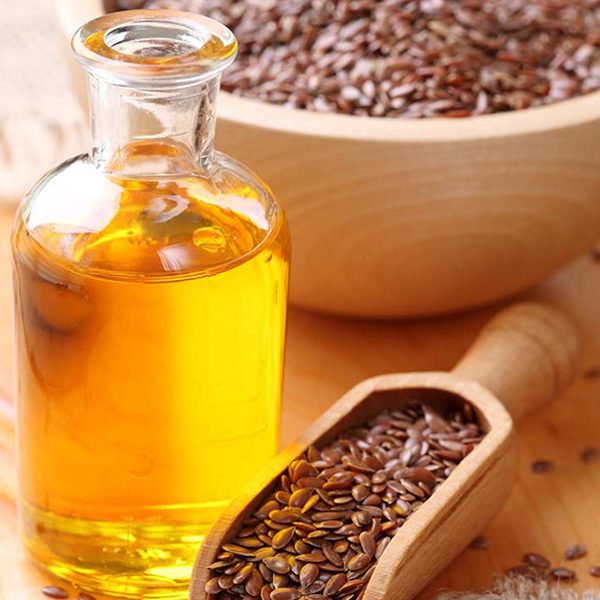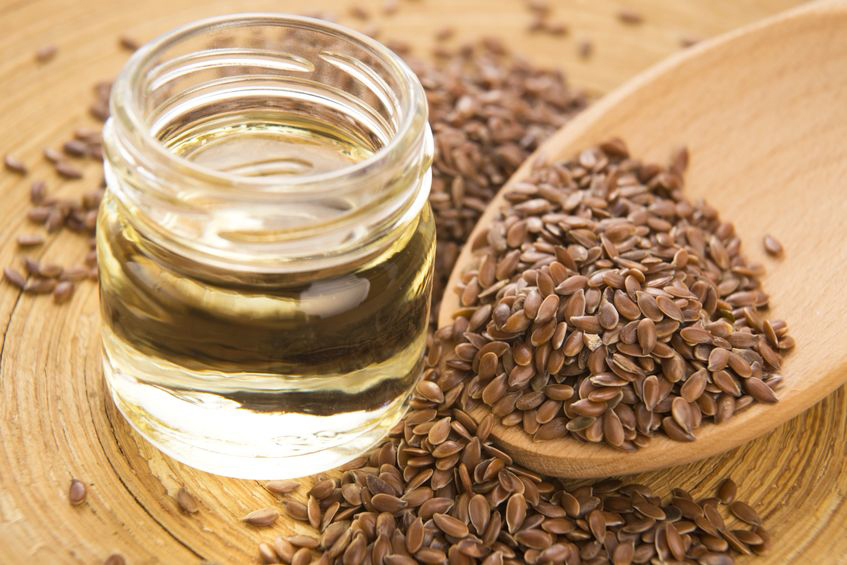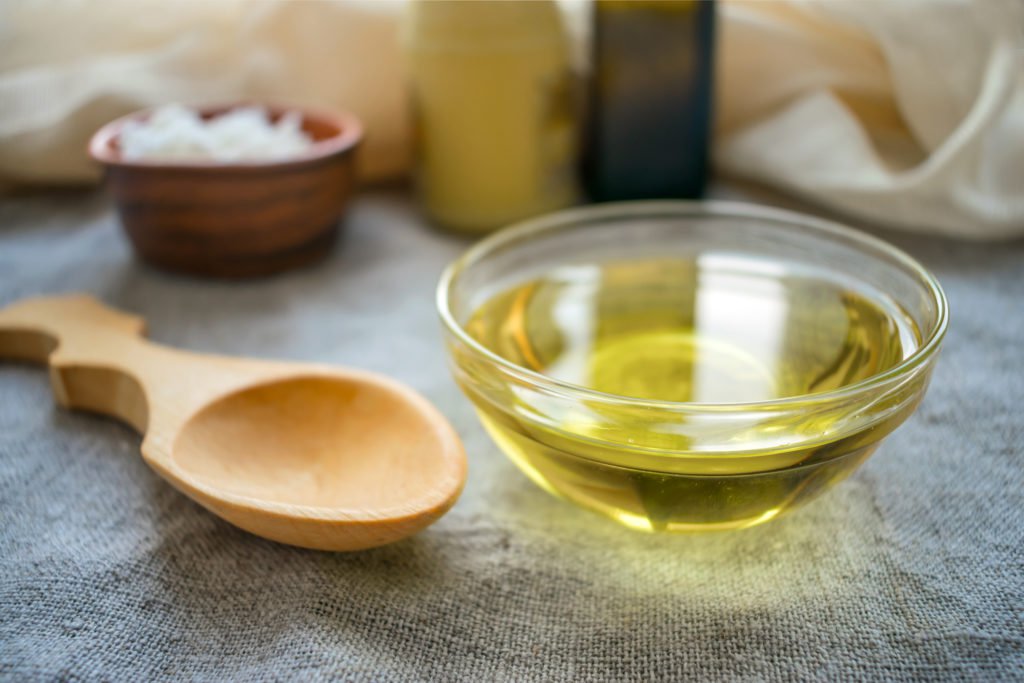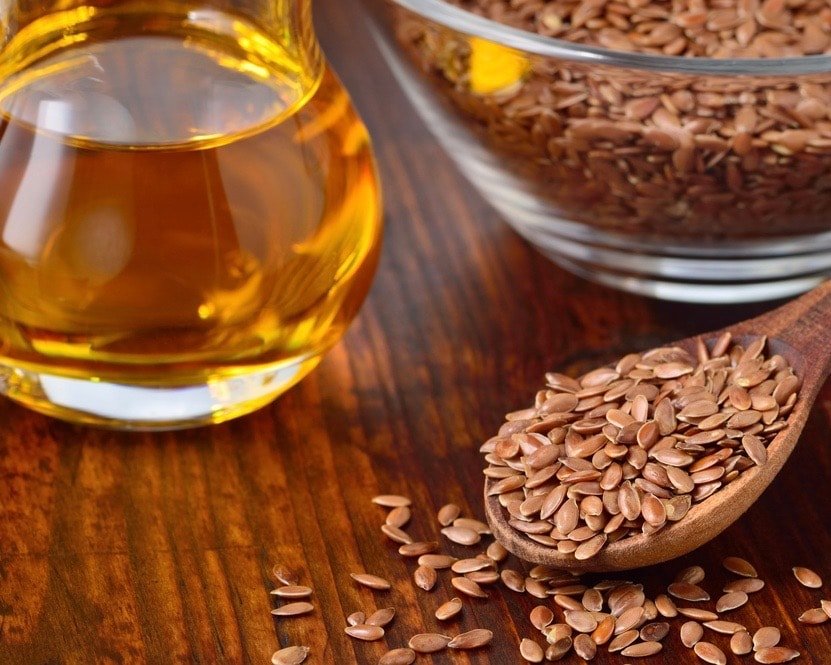Flaxseed has miraculous properties and even allows the human body to recover from many ailments. Oil is made from it, which improves immunity and normalizes metabolism. It also stabilizes digestion, reduces pain and is an anti-inflammatory. Flax seed even reduces blood sugar, improves the liver and gall bladder.
Useful properties of oil
This product contains a lot of vitamins (A, B, G, K), trace elements and fatty acids such as omega-9, omega-6 and omega-3. Oil is an antioxidant that allows you to fight the virus and bacteria in the human body. Flaxseed oil is taken for the prevention, treatment of diseases and conditions:
- a stroke;
- hypertension
- heart problems;
- it normalizes blood pressure;
- prevents osteochondrosis and cancer.

Effect on the human body with pancreatitis
Pancreatitis is an inflammation of the pancreas, in which its tissues are destroyed and in fact the organ "eats" itself. The harmful decomposition product enters the kidneys, lungs, heart, and even the brain, thereby affecting them. For healing and prevention, it is recommended to use linseed oil. But many people think about whether linseed oil can be used for pancreatitis. The answer is the same for all doctors: "Yes." Not only possible, but even necessary. But here a lot depends on the stage of the disease. When deciding to use this product, you should consult with a specialist (for example, with your doctor), so that he determines the degree of the disease, the individual dosage, taking into account the characteristics of the body.
If pancreatitis manifests itself in an acute form, then the use of a medicinal drink is prohibited, because the release of bile enters the ducts of the gallbladder and causes spasms. Since linseed oil in pancreatitis promotes the production of bile, seizures will be even stronger and more frequent, and this can also lead to tissue necrosis. Such patients should follow a certain diet and diet. As soon as the acute form is stopped, a remission ensues. During this period, a person can drink linseed oil with pancreatitis. Because it strengthens the patient’s immunity and helps to recover faster after an acute form.

Know that oil:
- Reduces constipation, restores the digestive tract and intestines. You should drink two to three teaspoons per day. If side effects do not occur, then the dosage can be increased to 3 tbsp. spoons.
- Restores immunity and strengthens it. Self-regeneration of organ tissues occurs.
- Promotes a mild laxative effect.
- It facilitates the condition of a woman with PMS, prepares tissues for stretching and eliminates some symptoms of menopause. Flax seed is used as an anti-inflammatory agent, as it relieves inflammation in the body and stimulates the gastrointestinal tract.
Oil for a chronic illness: what gives and how it should be used
Flaxseed oil with pancreatic pancreatitis in a chronic form eliminates intoxication, boosts the immune system, and lowers blood cholesterol. In cases of constipation, oil normalizes stool and bowel movements. During chronic pancreatitis, you need to drink two teaspoons immediately before eating or with food. Flax seed produces an enveloping effect and fills the body with the necessary vitamins and minerals. It restores metabolic processes, and is allowed in diabetes. Oil makes blood less viscous. It helps to lose weight and cleanse toxins. Prevents cholesterol plaques and balances cholesterol.
Experts strongly advise taking this product so that the patient heals and lives a full life. Flaxseed oil for pancreatic pancreatitis can be used as an additional dressing for salads, sauces and side dishes. The dosage prescribed by the attending physician should be strictly observed, because an excess can only harm a person.

Healthy recipe
There are a large number of recipes on how to take linseed oil for pancreatitis, but this one has become the most popular:
- One potato tuber is grated and squeezed juice. This can be done with gauze or just take the potato gruel in your hand and squeeze your palm into a fist.
- Mix the resulting juice and linseed oil. Take this "medicine" should be within three weeks on an empty stomach. This is quite enough to relieve inflammation of the mucosa in the pancreas.
Contraindications

Despite the beneficial properties of linseed oil, there are contraindications:
- pregnancy and lactation period;
- gastrointestinal tract diseases in acute form;
- diarrhea;
- periodic increase in blood pressure;
- children's age up to five years.
Also, flax seed can cause allergies, so you need to be careful and careful when taking it.

Pancreatitis linseed oil or flax seed
These two products are equally useful. Just the question is in the ease of use. The liquid version is easier to drink at any time, but not everyone can eat seeds. An alternative is to grind the beans in a blender or coffee grinder, which are then added to cereals, soups and salads. In this version, they are practically not felt, but they bring a lot of useful properties to the body. Many people believe that linseed oil with pancreatitis can be added to hot dishes - this is a myth. At high temperatures, the property of the product is lost. Therefore, it is best to drink oil or add seeds to cooled dishes and drinks.

The effect of flaxseed oil on the child's body
From the age of two, the baby can get pancreatitis. Most often this is due to food allergies. Up to 6 years, the chronic form practically does not occur. At risk are mainly children under 10 years old. Parents are constantly wondering whether it is possible to drink linseed oil with pancreatitis in children. In childhood, flax oil can be given from the age of five. The recommended dosage from 5 to 9 years is a teaspoon. From 9 to 14 years, the dose can be increased to two teaspoons. Many babies do not like the taste of oil, so you can add the product to food. It is given to strengthen the immune system, bone growth and stable gastrointestinal tract, brain and heart.
Flaxseed oil can be used for children on time:
- colds;
- suspension of development;
- poor appetite;
- capricious state and fatigue;
- with frequent constipation and diarrhea.
The benefits and harms of oil with cholecystitis
Cholecystitis is usually an inflammation of the gallbladder that can occur with gallstone disease. At this time, the outflow of bile is disturbed and microflora appears in the lumen of the bladder. Flaxseed oil with pancreatitis and cholecystitis is a choleretic agent. It helps treat even chronic cholecystitis without the formation of stones. In the acute form of the disease, you can not use linseed oil, because this can lead to bad consequences. Oil can be consumed during remission and as directed by a doctor. The specialist should prescribe a strict diet and the amount of product consumed. The standard dose is 1 tbsp. spoon, but this rate may vary depending on the body and existing human diseases.
How to use oil?
To nourish the body with vitamins and improve it, you should buy unrefined cold-pressed linseed oil , which is made at 45 degrees. With this treatment, the oil does not lose its beneficial properties and remains full. With hot processing (120 degrees), practically nothing useful remains in the oil. It can be used as a flavoring dressing or as an addition to a dish. Take the product should be raw without heat treatment. There are several ways to consume a healthy product:
- In its pure form, at one time, you can use no more than one dessert spoon or 2 tablespoons per day.
- Add to sauces, salads, side dishes (but not hot).
- Take oil both in pure form and as a supplement to food.

Storage and shelf life of flaxseed oil
You can use the product in capsules. Flaxseed oil has a short shelf life, so be sure to look at the production date. Storage temperature is + 5-25 ° C when closed (it can be a refrigerator or a closed cabinet in the kitchen). After opening the product must be stored in the refrigerator door and not more than 30 days. Some manufacturers write 60 days. Therefore, it is recommended to label the opening date of the bottle on the labels to ensure that the oil still contains beneficial substances. After the expiration date, and opening the bottle, all properties evaporate. Also, the oil should not be thermally processed, since carcinogens begin to be produced in it.